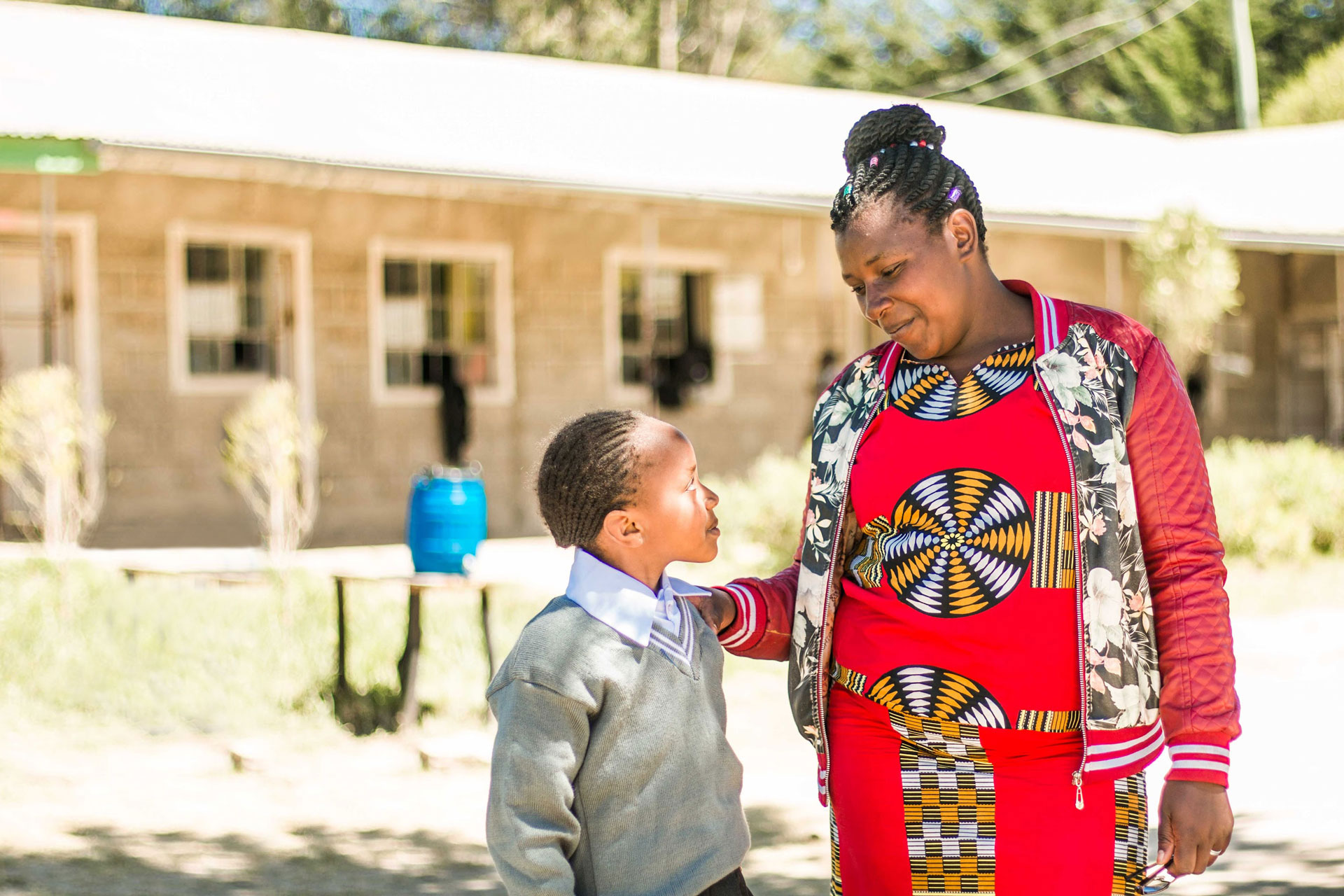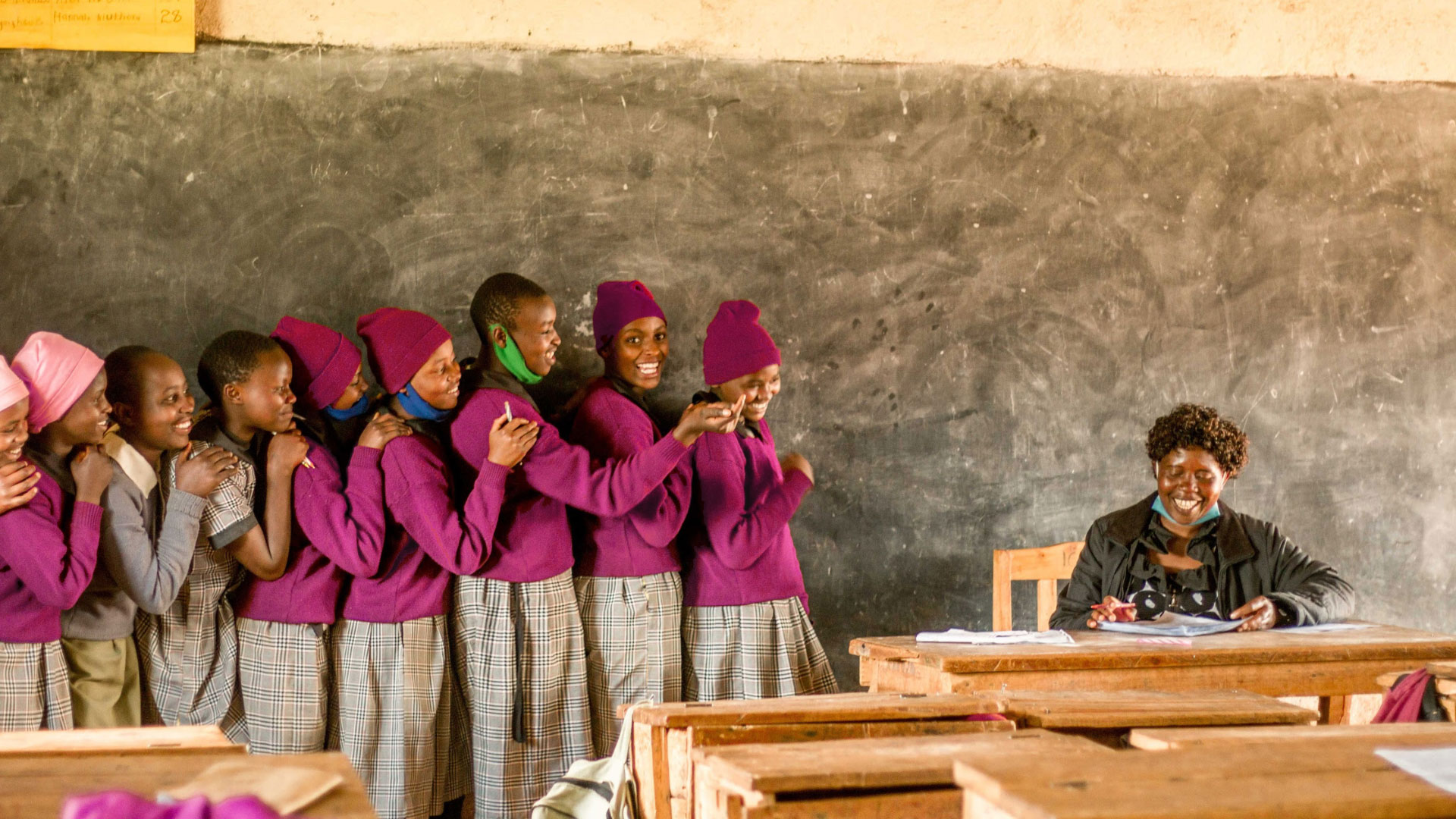With a driving purpose to improve the life outcomes of girls, Flying Kites partners with teachers to transform primary schools so that girls can come to school, stay in school, and thrive in school.

Data-driven,
evidence-based.
2024 Reach
9 Primary Schools
in The Flying Kites School Network
217 primary school teachers
enrolled in our Teacher Training Program
5,083 primary school students
benefiting from our integrative programs
Measuring Our Impact
Grade 7 GirlMany girls were performing poorly in academics because we feared the teachers and suffered low self esteem - this is because we did not have anyone to share our challenges with, especially period related but that has since changed… our performance and esteem has really improved.”
Grade 7 Girl Sasumua Primary
The impact of our work is measured through a set of core programmatic outcomes, designed to evaluate knowledge on key topics, access to services and support, and agency related to decision-making as indicators of our progress to ensure that adolescent girls in our community can thrive:
- Increased knowledge of sexual and reproductive health, menstrual health management, and pregnancy prevention amongst girls;
- Increased decision-making power among girls, especially concerning sexual and reproductive health choices;
- Increased involvement of girls in school and community leadership roles
- Increase in the level of gender equitable attitudes among students – boys and girls – and teachers;
- Increased capacity of teachers to address sexual and reproductive health, menstrual health management, gender-based violence, and gender equity;
- Increased access to menstrual health management resources and facilities for water, sanitation, and hygiene among girls in public primary schools, and
- Increased access to social networks through which girls feel safe and supported throughout primary and secondary school.
Building the capacity of teachers to access information
In August, we conducted our termly Teacher Technology Training Workshops for 192 primary school teachers in our School Network (62% of which are female) including 29 Technology Champions and 41 Girls Education & Leadership Club Leaders. Following the workshops, 65% of teachers were able to independently access online resources on topics of menstrual health management, sexual and reproductive health, gender-based violence, and gender equity compared to 0% at baseline.
Increasing gender-equitable attitudes in schools
In late October, we conducted our Term 3 Gender Equity Workshops for leaders across our 9 Network schools. Using components of USAID’s Doorways Training Program, we trained Head Teachers, Girls Education & Leadership Club Leaders, and Child Protection Volunteers to lead Gender Equity Workshops in their own schools for fellow teachers, students, and parents that introduce concepts of gender and gender equity, discuss beliefs, and examine gender roles. Following a Term 2 school-based Gender Equity Workshop earlier this year, 31% of Grade 5 – 8 students surveyed reported feeling freedom from gender roles.
Developing tools to prevent gender-based violence
In October, we trained 193 teachers and 3,270 students at 9 Network schools on gender-based violence (GBV) prevention and reporting resources. Following the workshops, 100% of 9 Network schools signed onto zero tolerance policy for GBV and 100% of teachers surveyed were able to correctly identify (1) the appropriate referral pathway for cases of GBV and (2) that they are required to report any instances of GBV to the Teachers Service Commission.
Grade 7 GirlMany girls were performing poorly in academics because we feared the teachers and suffered low self esteem – this is because we did not have anyone to share our challenges with, especially period related but that has since changed. Girls are now top in all classes, our performance and esteem has really improved.”
Grade 7 Girl Sasumua Primary School

Impact Highlights
39%
fter one year of participation in our Girls Education & Leadership Clubs, the number of girls who reported feeling shame around menstruation decreased by 39% (64% at baseline; 25% at endline).
23%
After one year of programming, we saw a 23% increase in the number of girls who reported feeling confident in class while menstruating (from 19% in baseline to 42% at endline).
65%
After completing a year of our Teacher Training, 65% of teachers achieved a level of proficiency in the development of basic technology skills, including being able to access online resources needed to develop engaging lesson plans and foster equitable learning environments (0% at baseline; 65% at endline).
62%
We saw a 62% increase in the number of primary school teachers who reported feeling confident to report gender-based violence and ensure access to victim services following participation in our Gender-Based Violence Prevention Program (38% at baseline; 100% at endline).
88%
88% of schools meet the basic level of water and sanitation service in schools, as defined by the WHO/UNICEF Joint Monitoring Programme, which requires that students have access to clean water, safe toilets and hand washing facilities at school (0% at baseline; 88% at endline).
32%
As a result of our Gender-Based Violence Workshops, we saw a 32% increase in teachers who accurately identified the types of gender-based violence (including corporal punishment, female genital mutilation, physical abuse, verbal abuse, and sexual abuse) (56% at baseline to 80% at endline).



